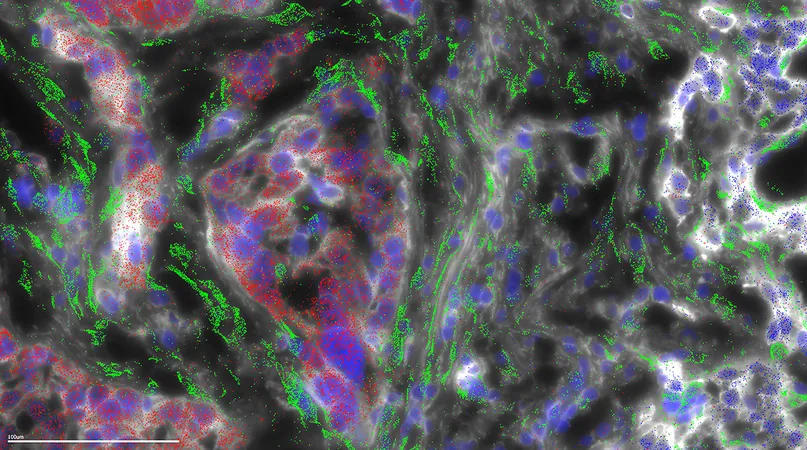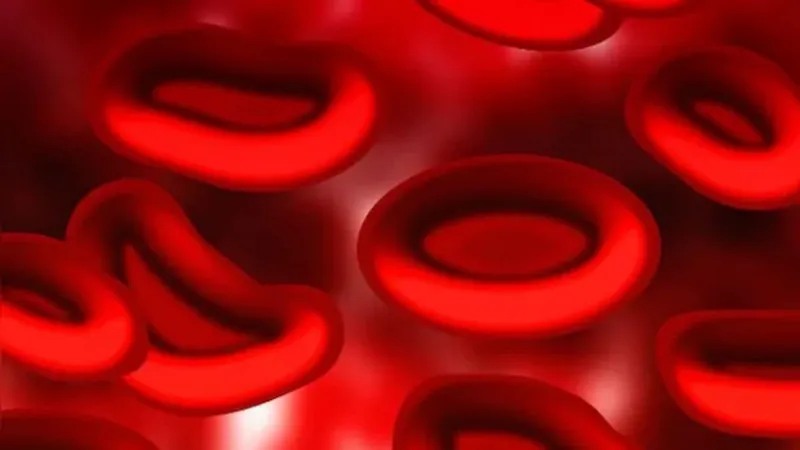
Breakthrough Insights into Fibrolamellar Hepatocellular Carcinoma: A Game-Changer for Young Patients
2025-01-17
Author: Wei Ling
Rare diseases often hide in plain sight, and fibrolamellar hepatocellular carcinoma (FLC) is no exception. This aggressive liver cancer primarily afflicts children, adolescents, and young adults, posing a significant challenge due to its variable symptoms, which can lead to misdiagnosis. Unfortunately, patients often discover their condition only after it has metastasized, at which point treatment becomes critically complicated. The harsh reality is that conventional drug therapies for liver cancer prove not only ineffective but can also be detrimental for those battling FLC.
However, hope is on the horizon as groundbreaking research from Rockefeller University's Laboratory of Cellular Biophysics unveils new insights into the disease. Spearheaded by Sanford M. Simon, researchers have identified a unique transcriptomic signature in FLC—specifically, an exclusive set of activated genes—offering a crucial key to understanding this complex cancer.
David Requena, a senior researcher in Simon's lab, stated, “Identifying the molecular changes specific to FLC is pivotal for diagnosing its origin and progression, ultimately leading to new therapeutic targets.” This discovery stands to refine early detection techniques, revolutionize treatment pathways, and boost survival rates among patients.
A Deep Dive: Insights from a Decade of Research
The journey toward these revelations began in 2014 when Simon's lab, notably influenced by his daughter Elana's own battle with FLC, identified the genetic fusion between DNAJB1 and PRKACA responsible for the disease. Their research showed that the problem lies in an overproduction of the catalytic subunit of protein kinase A, resulting in a hazardous molecular imbalance in FLC tumor cells.
But understanding the genetic cause was only the beginning. The researchers sought to uncover whether there was a common pathway following the surge of PKA proteins in FLC, particularly since some liver tumors exhibit similar characteristics but do not carry the fusion protein.
The Distinct Signature of FLC
To elucidate these questions, they conducted an extensive analysis using multiomics sequencing data from 1,412 tumor samples, marking one of the most comprehensive investigations into the genetic makeup of liver cancers. From this analysis, a staggering 301 genes were identified as differently expressed in FLC compared to other tumors, highlighting its distinct nature. Among these, 35 genes were uniquely elevated only in FLC, paving the way for potential new diagnostic tools.
Furthermore, a surprising finding emerged when researchers analyzed tumor transcriptomes alongside normal tissue samples. One sample displayed the same FLC signature, indicating that remnants of cancerous cells could remain after tumor removal—potentially setting the stage for recurrence.
Advancements in Clinical Trials
Buoyed by these insights, the Simon Lab has initiated a clinical trial testing a novel combination of two cancer medications, DT2216 and irinotecan. Previous investigations hinted that this pairing could yield positive results against FLC. Supported by the Children's Oncology Group and the NIH’s Pediatric Early Phase Clinical Trials Network, this trial is a beacon of potential hope for affected young patients.
Simon’s lab is also involved in alternative therapeutic developments through the Cancer Grand Challenge, a distinguished initiative offering substantial funding for research focused on defeating oncoproteins like PRKACA.
As Simon aptly puts it, “Ten years ago, our aim was to rigorously characterize this rare disease to fast-track progress in diagnostics and treatment, not just for FLC but potentially paving the way for breakthroughs in various cancers.” Their current findings validate the promise that such insights can be translated across different types of cancers, enhancing understanding and treatment options for a broad range of malignancies.
This transformative journey of researching a rare form of cancer underscores the intricate dance of scientific inquiry and innovation. The hope is that the persistence of researchers like Simon and his team will not only improve outcomes for FLC patients but also inspire novel approaches in the fight against various other cancers. So, could FLC research hold the key to a broader understanding of cancer itself? Only time will tell, but the signs are certainly promising.



 Brasil (PT)
Brasil (PT)
 Canada (EN)
Canada (EN)
 Chile (ES)
Chile (ES)
 Česko (CS)
Česko (CS)
 대한민국 (KO)
대한민국 (KO)
 España (ES)
España (ES)
 France (FR)
France (FR)
 Hong Kong (EN)
Hong Kong (EN)
 Italia (IT)
Italia (IT)
 日本 (JA)
日本 (JA)
 Magyarország (HU)
Magyarország (HU)
 Norge (NO)
Norge (NO)
 Polska (PL)
Polska (PL)
 Schweiz (DE)
Schweiz (DE)
 Singapore (EN)
Singapore (EN)
 Sverige (SV)
Sverige (SV)
 Suomi (FI)
Suomi (FI)
 Türkiye (TR)
Türkiye (TR)
 الإمارات العربية المتحدة (AR)
الإمارات العربية المتحدة (AR)